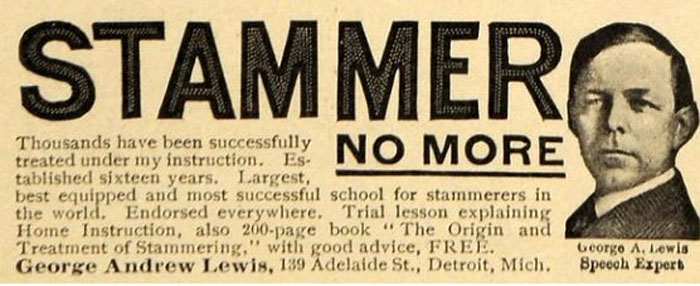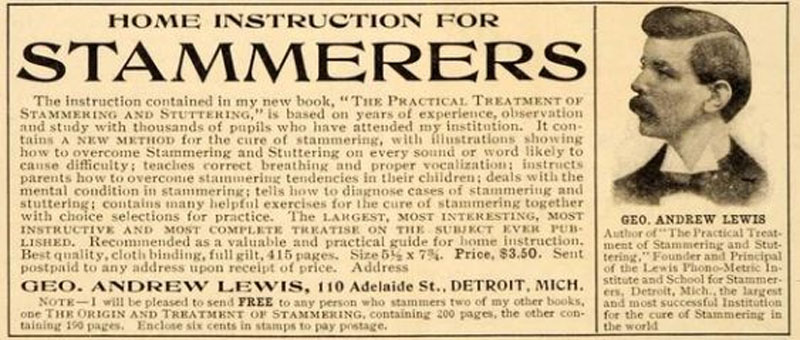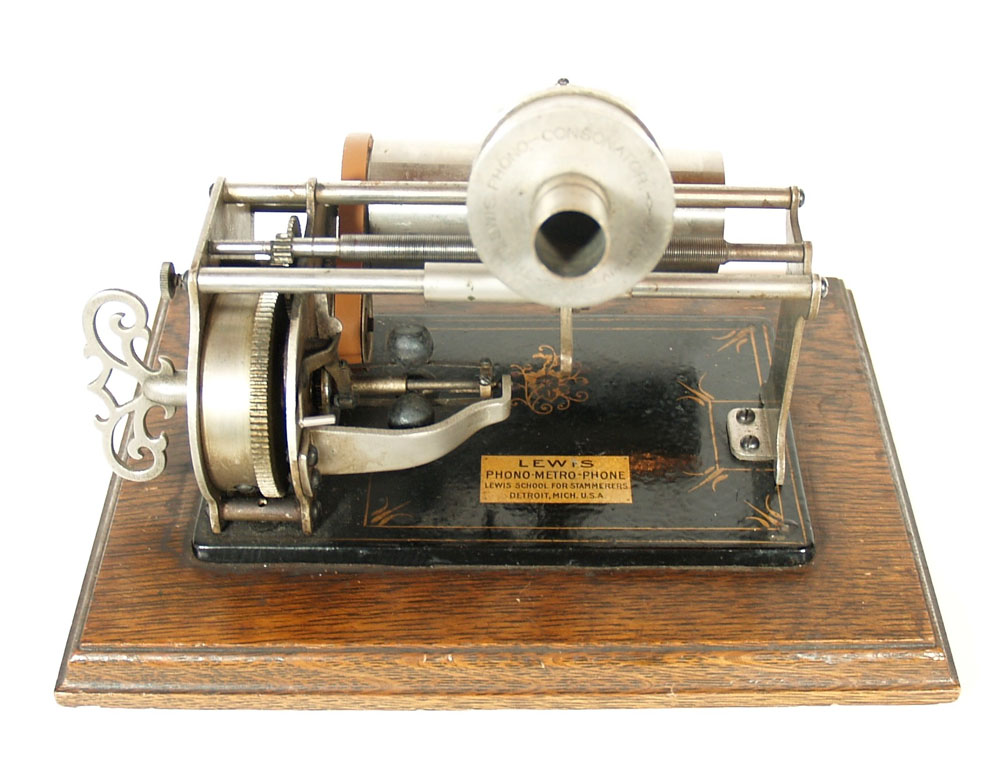The
Phonograph and Its Future
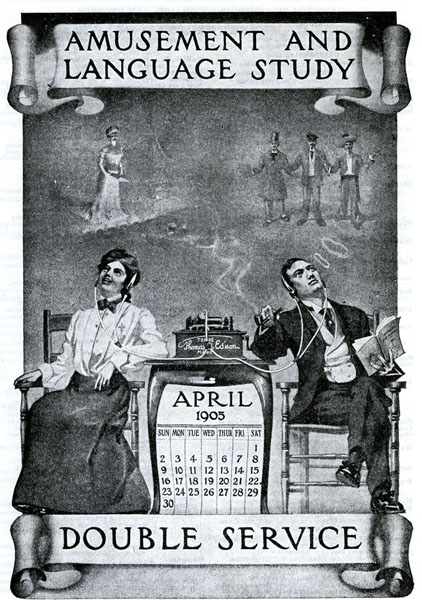
Probability:
Educational Purposes
Educational
Purposes.--
As an elocutionary teacher, or as a primary teacher for children,
it will certainly be invaluable. By it difficult passages may be
correctly rendered for the pupil but once, after which he has only
to apply to his phonograph for in instructions. The child may thus
learn to spell, commit to memory, a lesson set for it, etc., etc.
Note: Edison's "probability"
discussed under "Phonographic Books" which identifies
that for the "preservation of languages they would be invaluable"
could also be applicable to this "Educational Purposes"
probability.
As a "primary teacher" for
learning a language this conversational course of the Meisterschaft
System, FRENCH, GERMAN, SPANISH, or ITALIAN, was offered in 1891
on twenty-four cylinder records for each language: "A Revolution
in the Study of Foreign Languages"
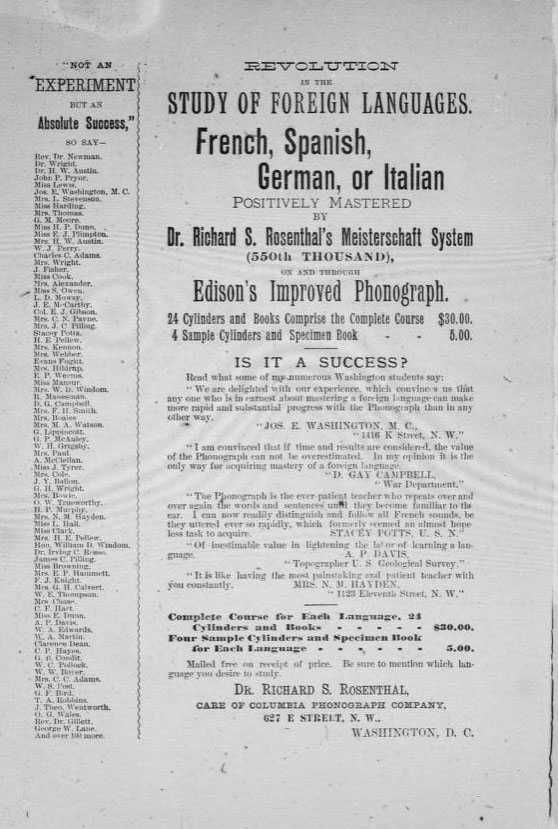
The Phonogram,
October 1891
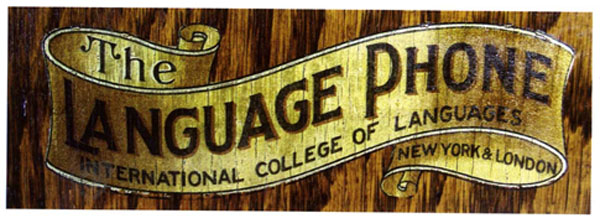
A version of the Columbia
Phonograph Type "Q" was sold as the Languagephone with this
logo on its lid (ca.1903). These machines were used to play Dr. Richard
Rosenthal cylinder records and follow his Meistershaft System
for learning French, Spanish, German or Italian.
The Berliner "Gramo-phone"
in 1897 was promoted as a 'French Teacher, German Teacher, Spanish
Teacher,' and 'Orator, Public Reader' (which could probably also
have served as an 'elocutionary teacher').
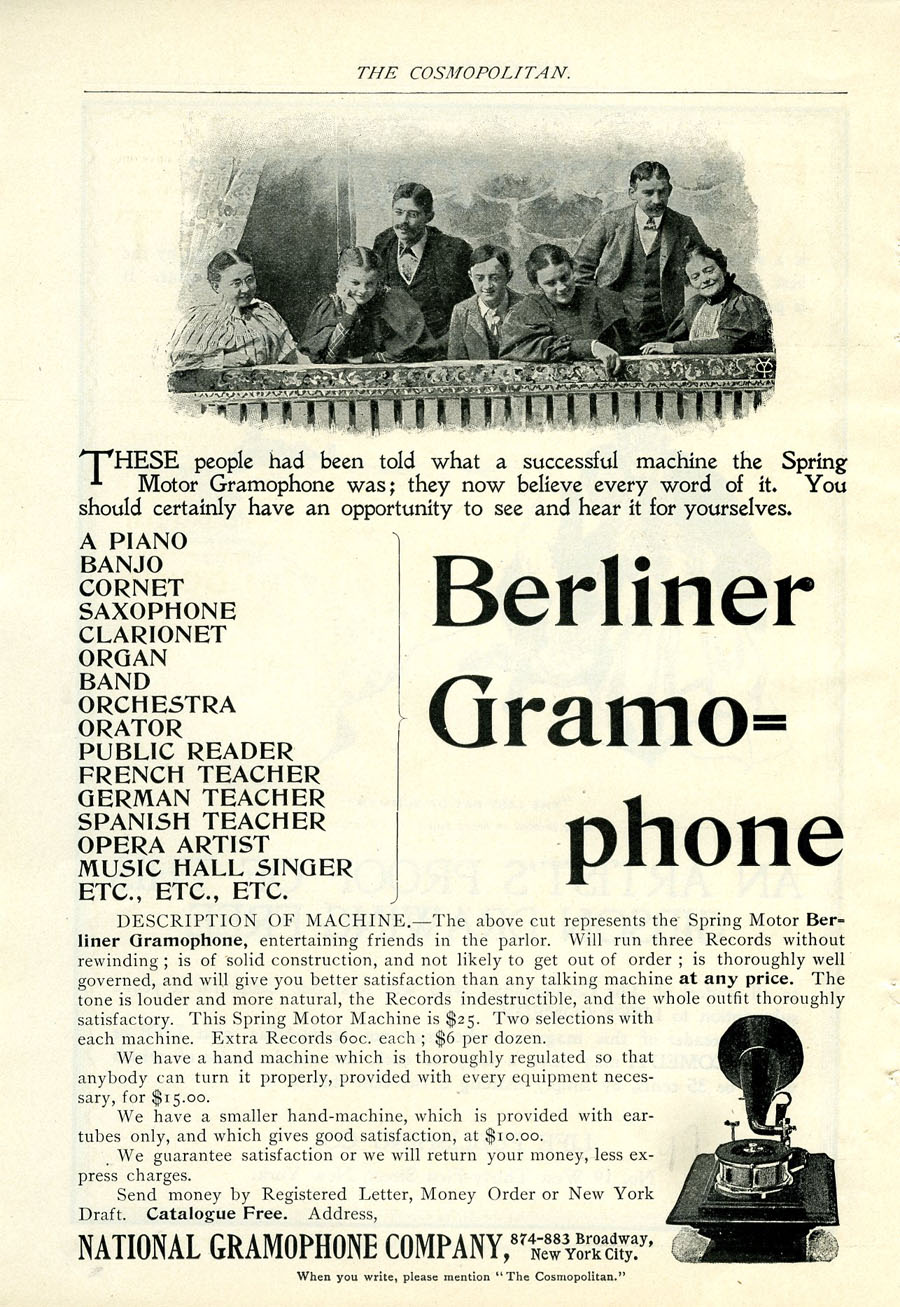
The Cosmopolitan,
1897
"The Bettini device
knows all languages" Also, "bottled in the studio for future
uncorking is the music..."
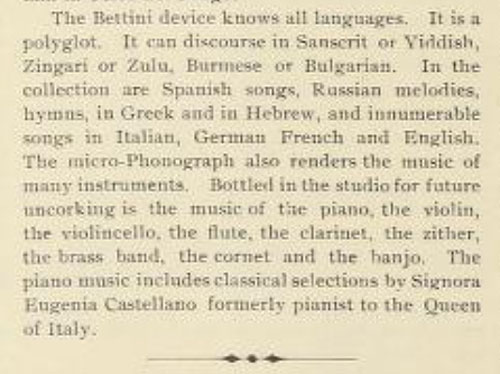
The Phonoscope,
December 1899
Learn a Modern Language
by Mail
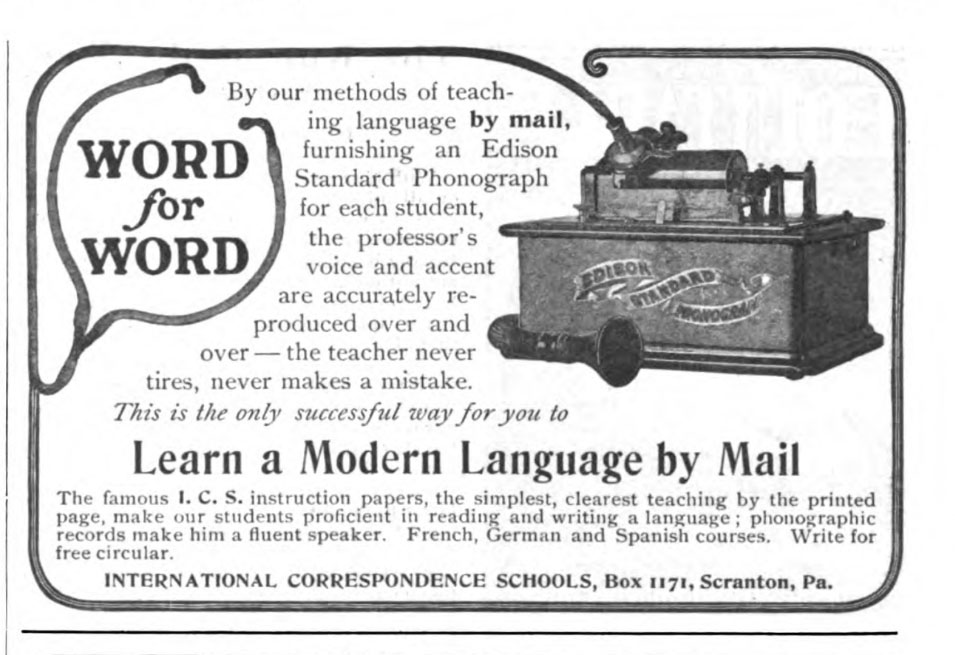
The Saturday Evening
Post, November 1901
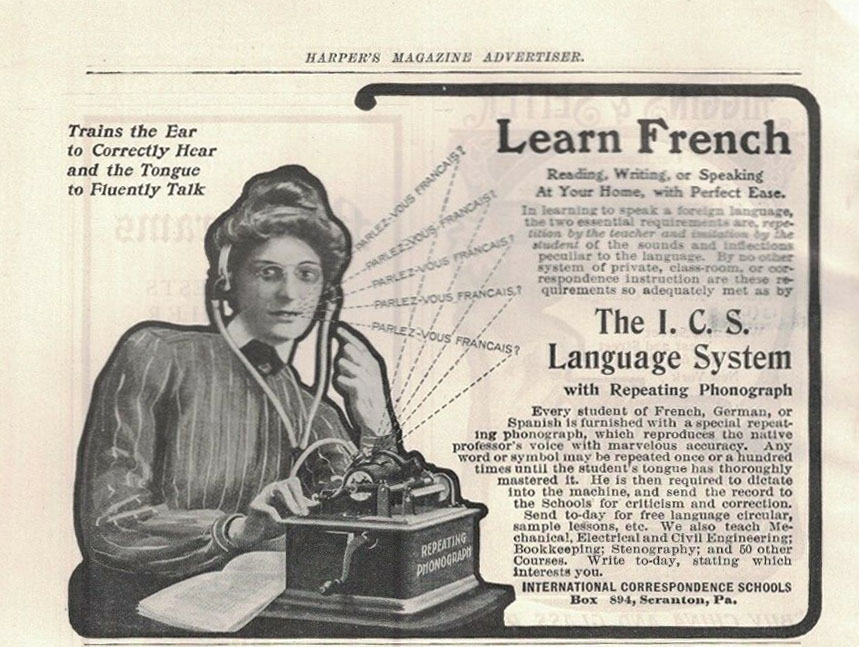
"Learn French",
Harper's 1903
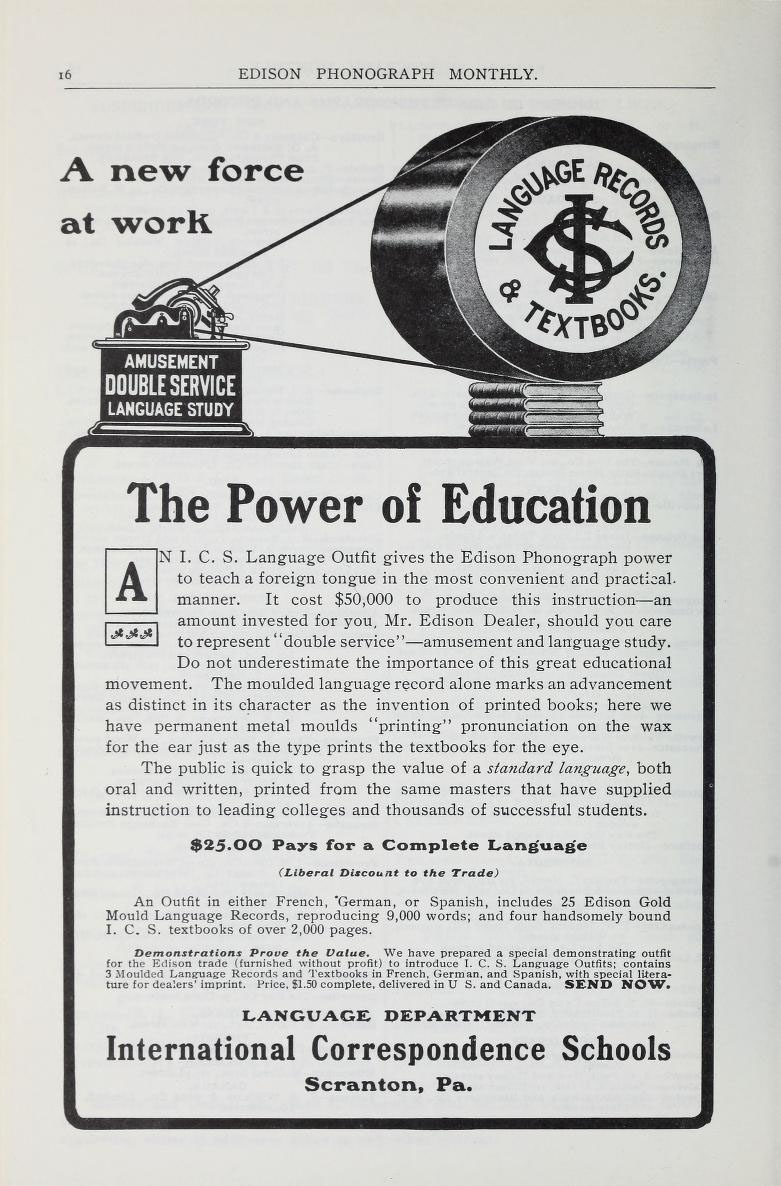
July 1904, The Edison
Phonograph Monthly
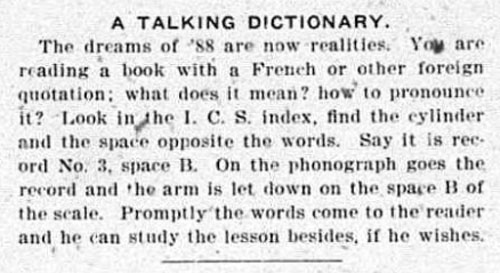
The Talking Dictionary,
The Talking Machine World, May 1905
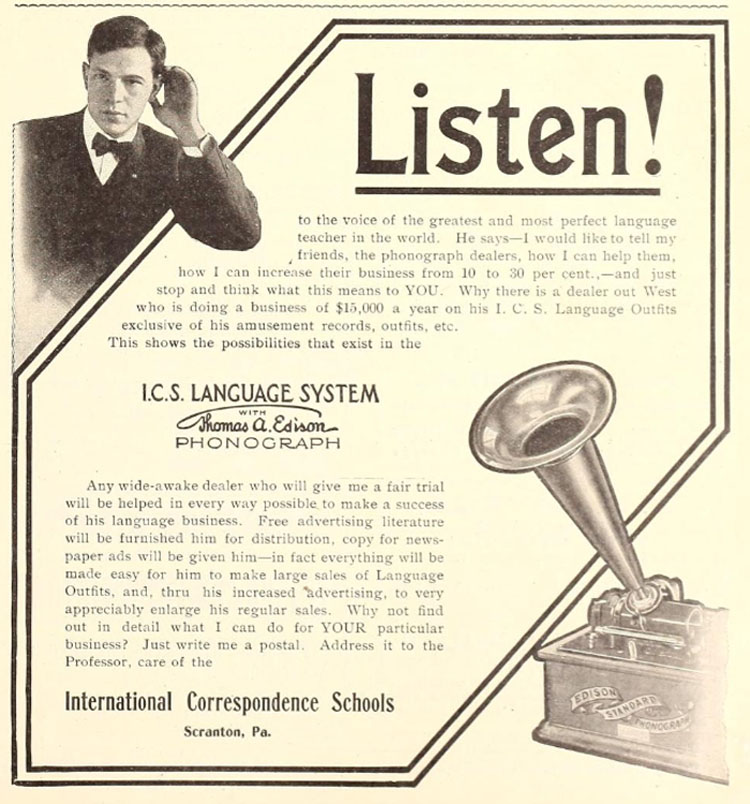
"Listen! to
the voice of the greatest and most perfect language teacher in the
world."
The Talking Machine
World, February 15, 1907
The Lewis Phono-Metric
Institute and School for Stammers offered a phonograph and cylinder
records as a "Home Cure for Stammering." "Lessons
could be practiced, or even mailed to the school for review."
" The "Lewis Institute distributed to its mail-order students
the Type "Q" Graphophone, known primarily as a home entertainment
device..." (ADV, p.85).
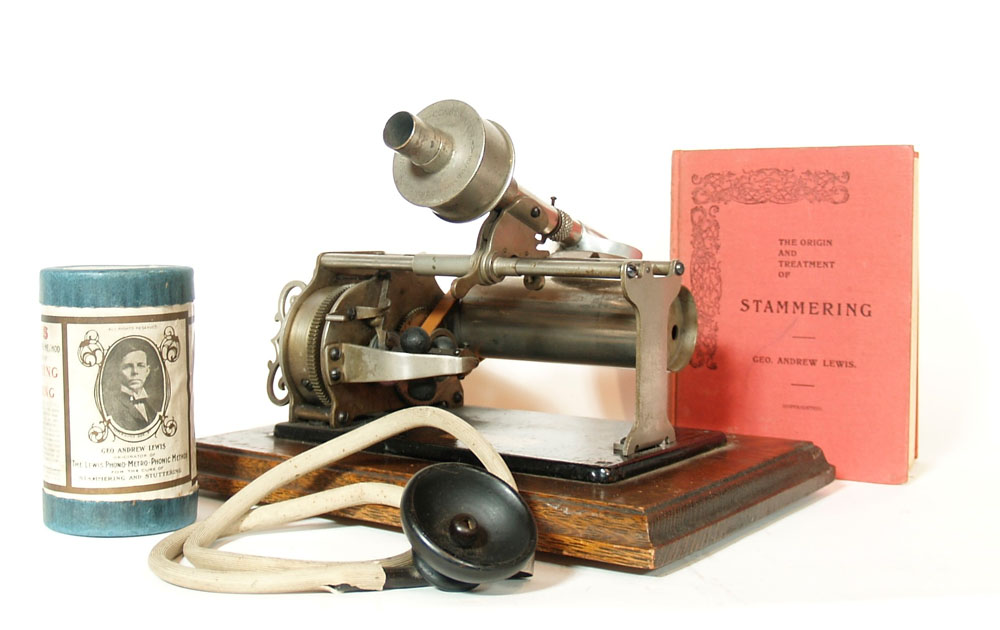
The Daily Examiner wrote in
1889 in an article titled "TALKING BACK" that the
phonograph has produced a revelation: everyone "is unacquainted
with the sound of their own voice."
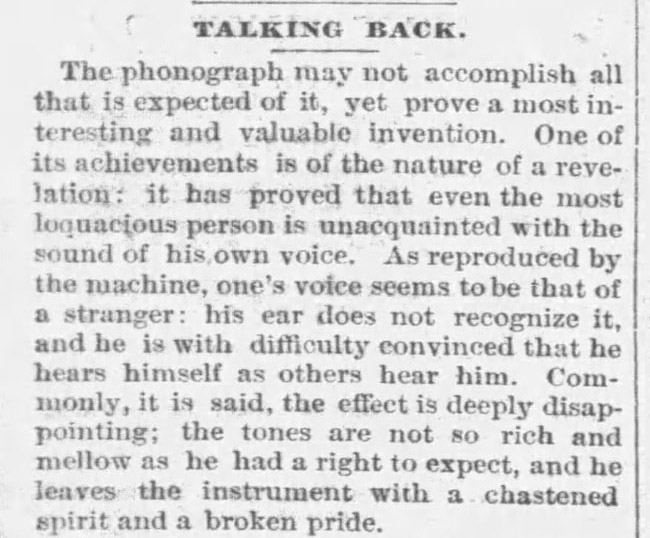
Why does that make the phonograph
a future educator? "As a teacher of humility it will take
rank with the parson, the flirt, the mirror and the banana-peel..."
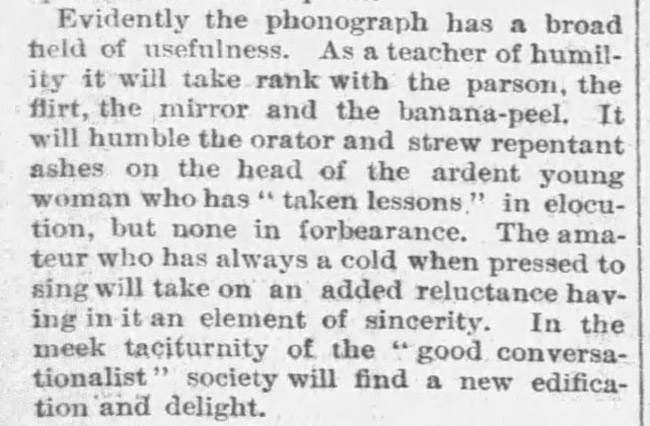
Talking
Back," The Daily Examiner, San Francisco, February
18, 1889
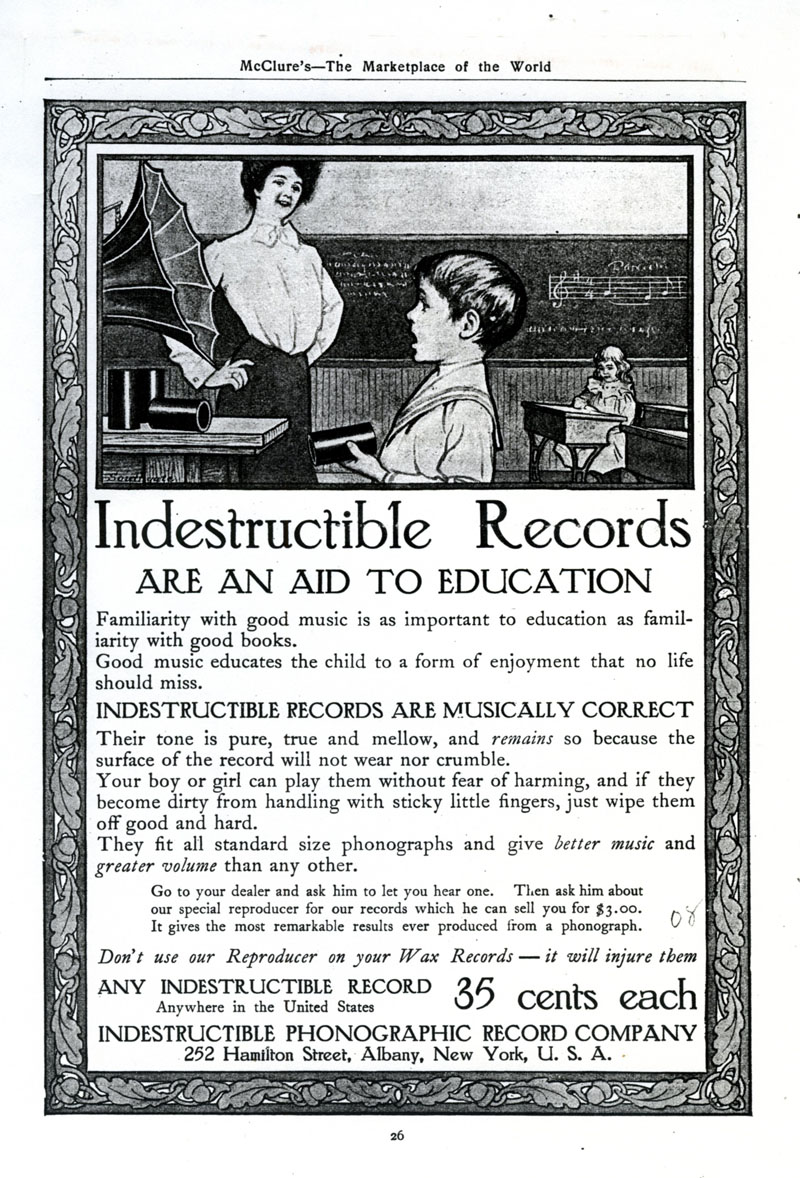
Indestructible Records
are an Aid to Education, McClure's 1908
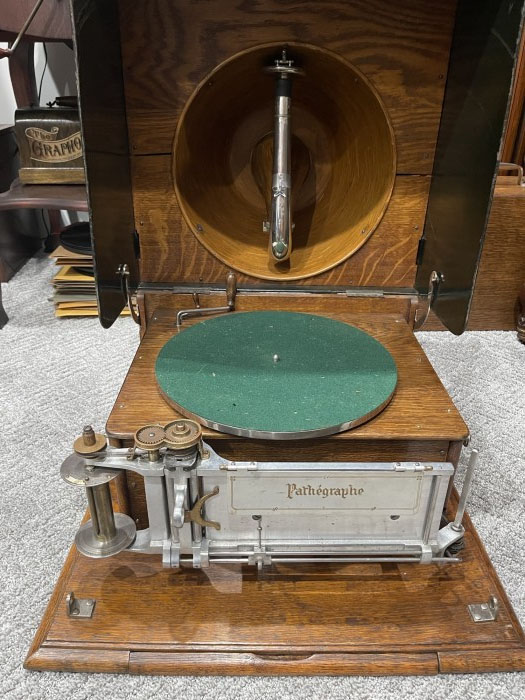
The Pathégraphe,
circa 1913
The Pathégraphe Language Machine
was a unique teaching phonograph which synchronized its record containing
the spoken words with the respective text on a paper roll that scrolled
across the front of the machine. The Pathegraphe was first designed
and manufactured around 1912 by Charles and Emile Pathé of the French
company Pathé Frères. (FP1517).
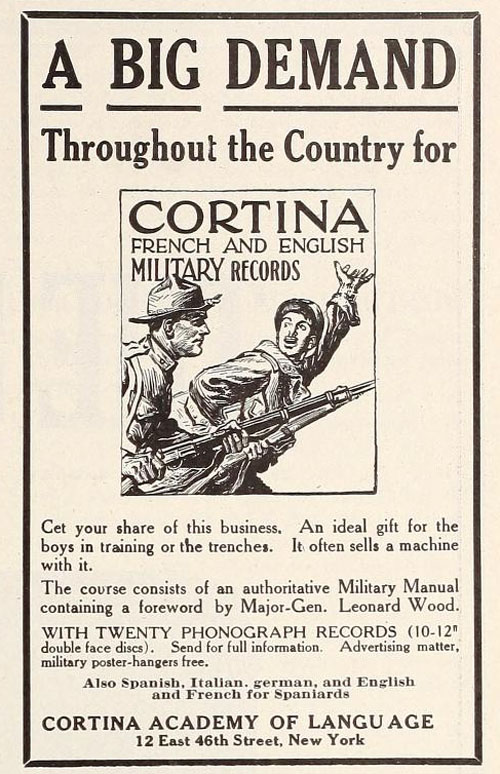
The Talking Machine World,
November 1917
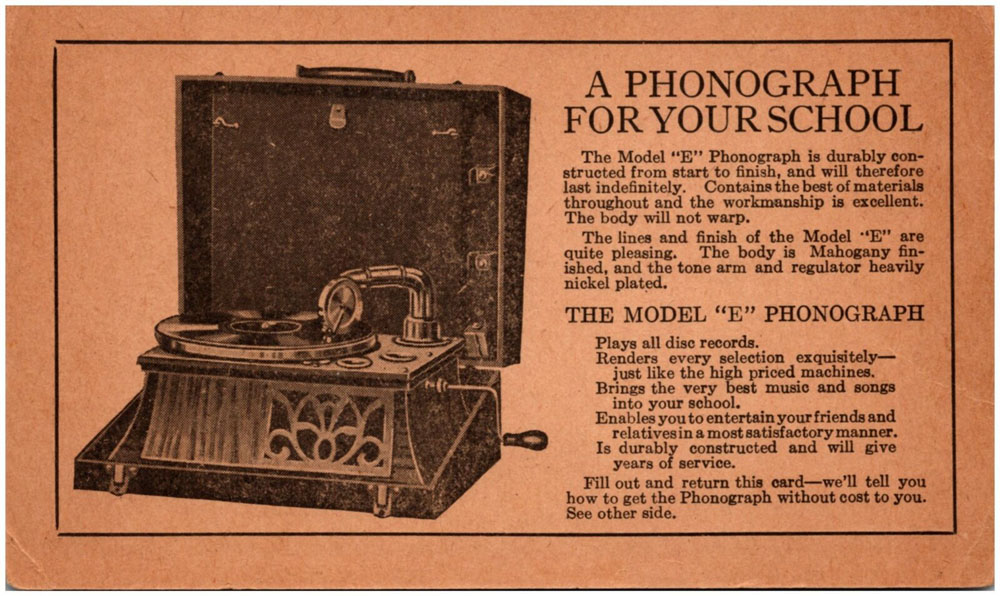
A Phonograph for your School,
Postcard ca. 1920
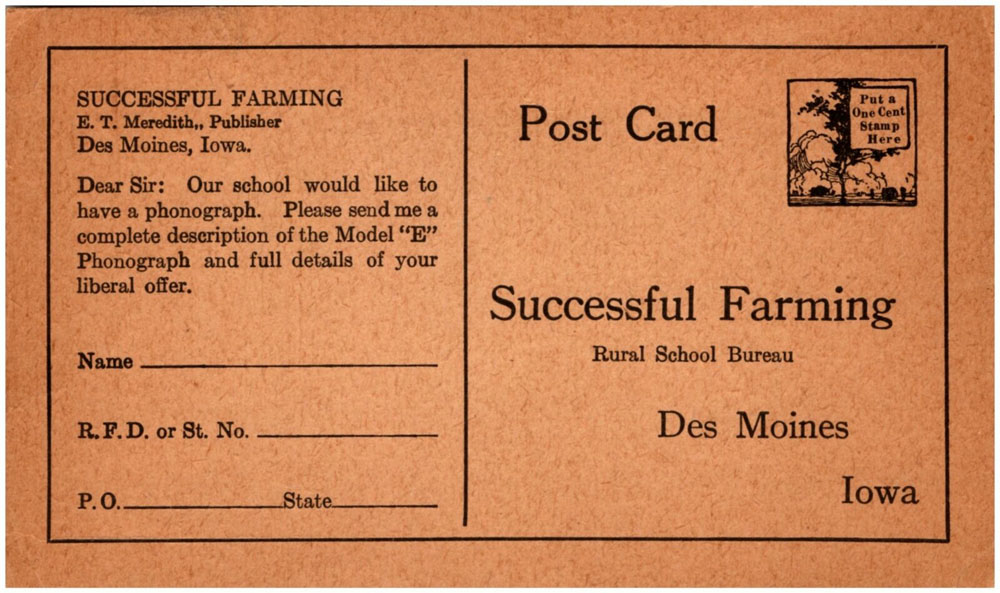
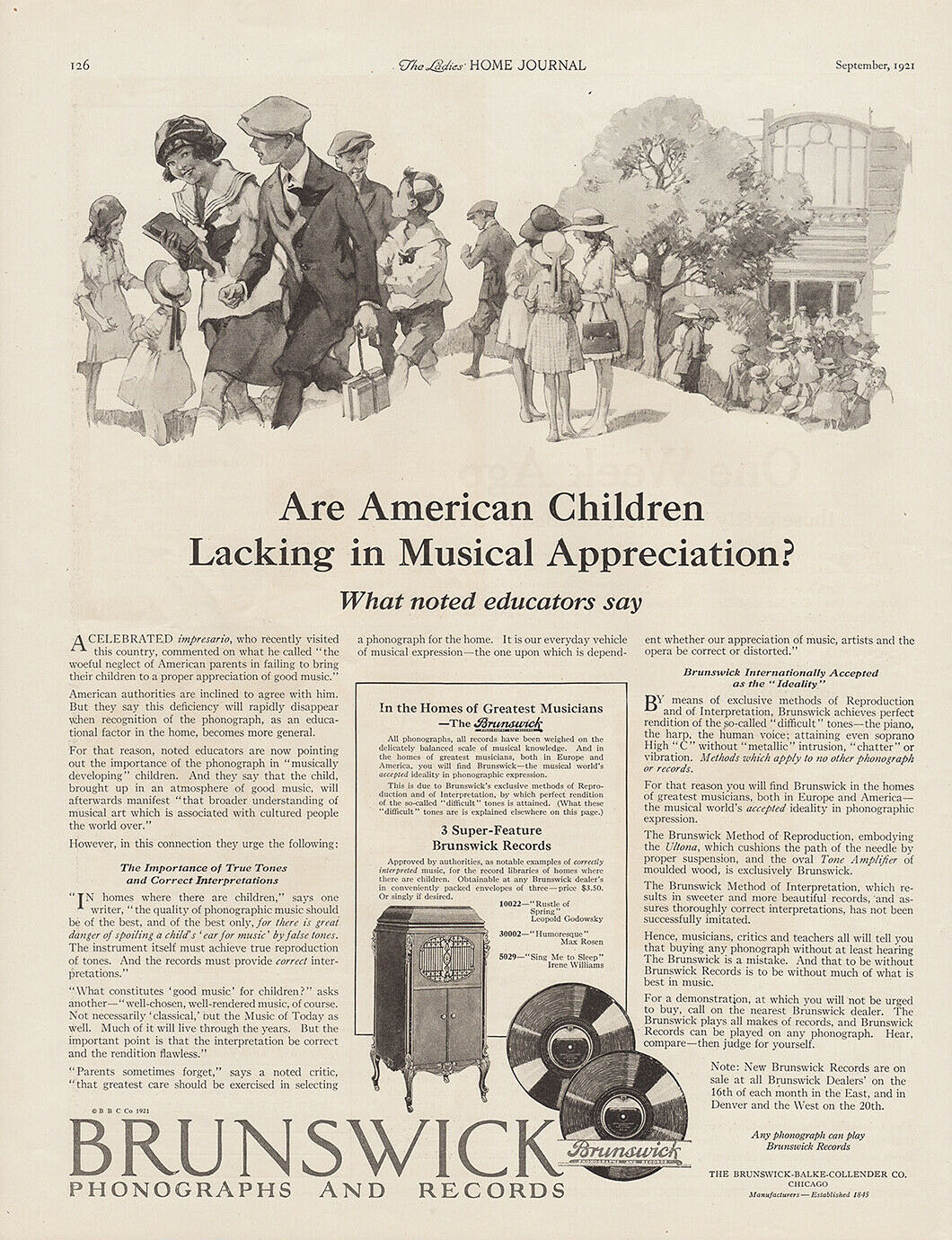
"Noted educators are
now pointing out the importance of the phonograph in "musically
developing" children."
The Ladies' Home Journal,
September 1921
A new kind of schoolhouse...where
great artists become teachers too."
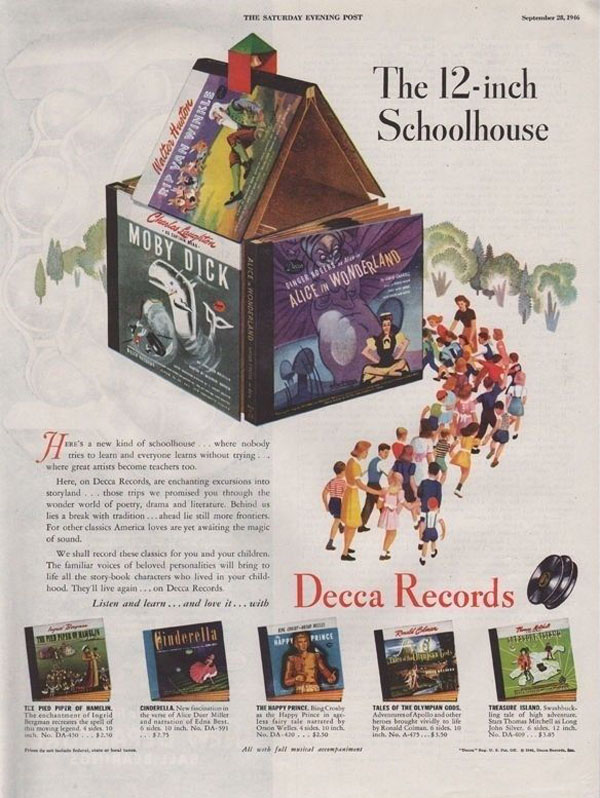
The Saturday Evening
Post, 1946
In 1888 Edison wrote a new article
for the North American Review titled "The Perfected
Phonograph" and expanded his previous predications about its
use for Education Purposes and Phonographic Books
by saying that "in teaching the correct pronunciation of English,
and especially of foreign languages, the phonograph as it stands
seems to be beyond comparison, for no system of phonetic spelling
can convey to the pupil the pronunciation of a good English, French,
German or Spanish speaker so well as a machine that reproduced his
utterances even more exactly than a human imiator could."
The War Department in 1943 issued
various "Language Guides" for military personnel which
included records that went along with the Guides. In the Danish
Language Guide it was noted that "Danish, like English,
is spoken differently in different regions. The pronunciation given
on the phonograph records, which is that used in Copenhagen, will
be understood wherever Danish is spoken, but it is always best to
try to speak like the people among whomyou happen to be." The
records that go with this Guide give you a number of the most important
words and phrases in Danish....Remember tha you can't get the sound
of a language from the printed word alone--you have to use your
ears even more than your eyes." (Danish Introductory Series
Language Guide, TM-30-311, p.5-6)
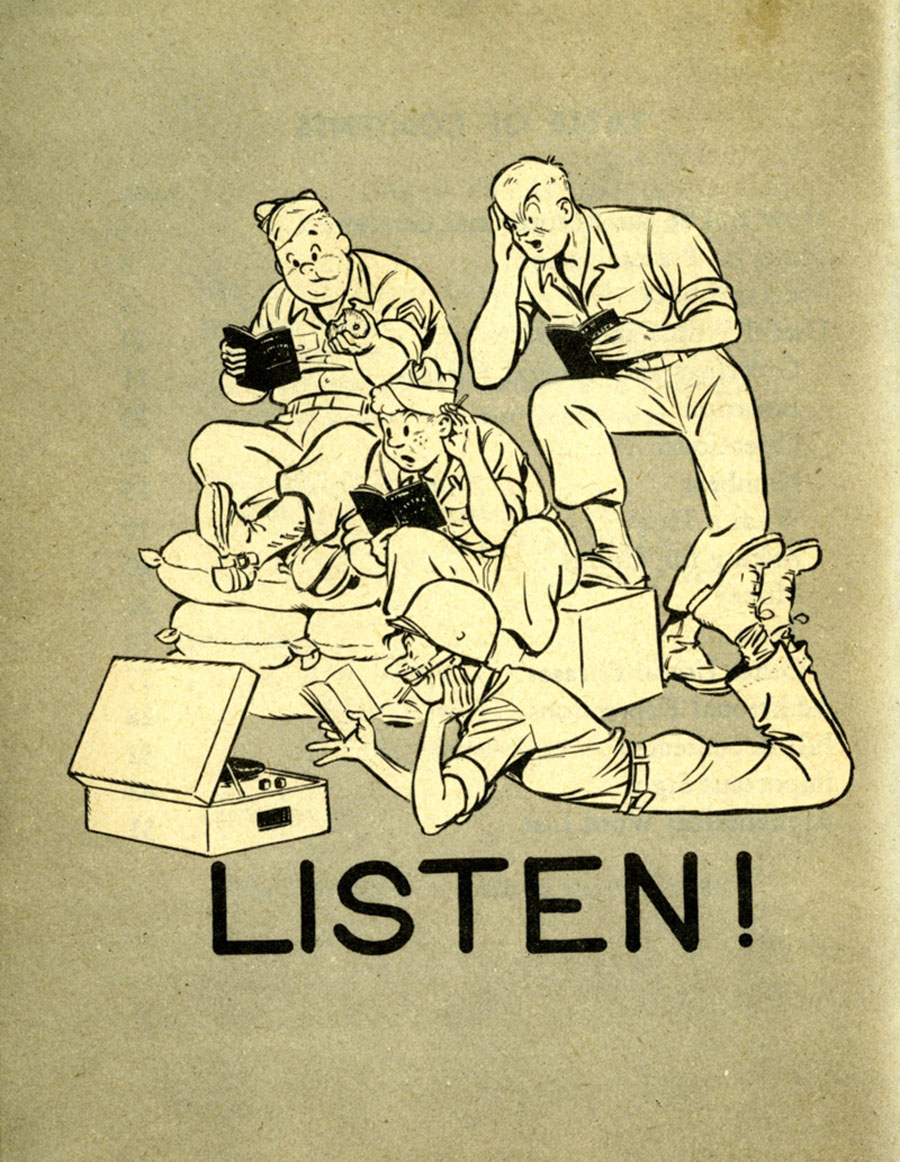
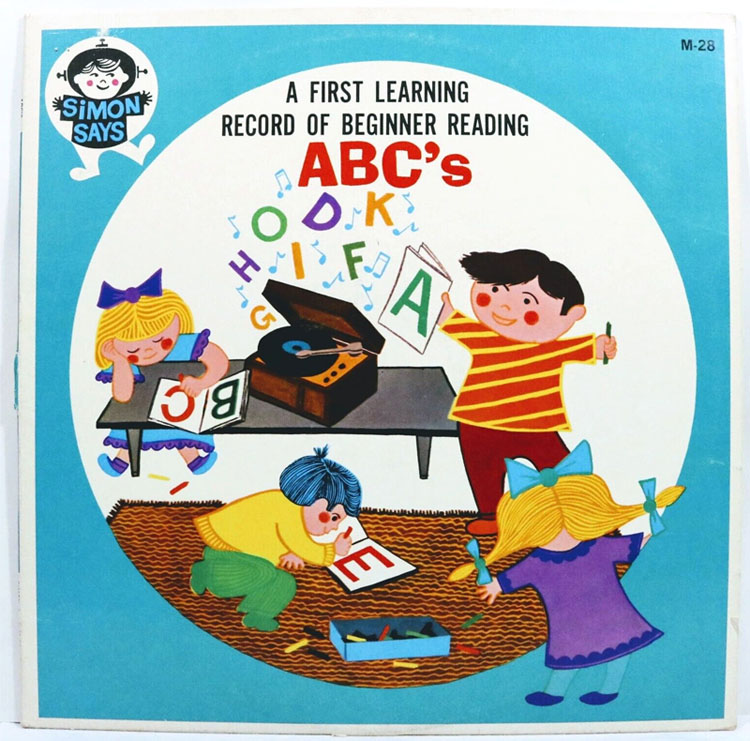
Simon Says A First
Learning Record of Beginner Reading ABC's, M-28, Cosmo Recording
Co., 33 1/3, ca. 1964

The Thomas Edison National Historic
Park has a page titled Educational
Lessons which has examples for language, music and dication
education.

Phonographia
|











